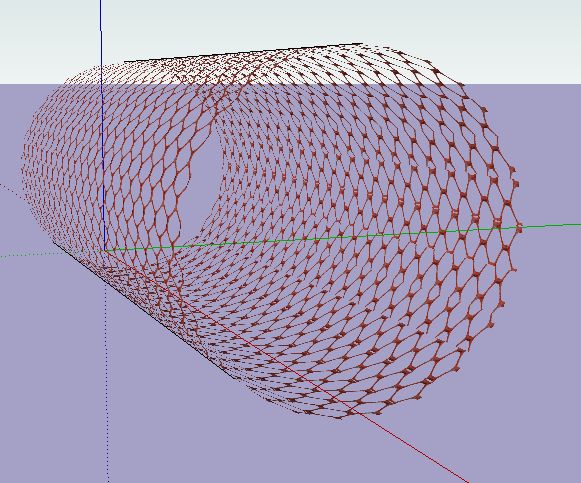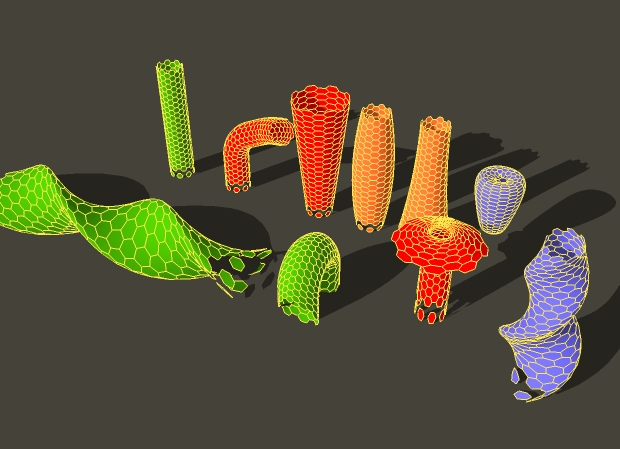[Tutorial > Modeling] carbon nanotube
-
i guess, the reason for choosing polygon instead of circle is that one then has control over the number of vertices.
i am not sure why you are refering to area...i don't think area came into the discussion
i find it amusing that the image at the start of this thread could also be generated by applying "diamond mesh" fencing material to a simple cylinder


-
Nice tutorial

thxsThis whas justs a experiment.
Using Freeform 2.0 Fredo6 and FFD From C. Phillips

-
very good!
It's amazing that it has been about a year since this thread was started...the abundance of scripts that have become available in that time!
-
@caddict said:
i guess, the reason for choosing polygon instead of circle is that one then has control over the number of vertices.
i am not sure why you are refering to area...i don't think area came into the discussion
i find it amusing that the image at the start of this thread could also be generated by applying "diamond mesh" fencing material to a simple cylinder

You do have control over vertices and sides with both tools. They are identical. If you click the circle tool and type in a number before moving the cursor, it will use that number to specify the number of vertices. So you can build three sided "circles" and 60 sided "circles." If you type in nothing it will default to 24.
The reason I mentioned area was that I expected the circle tool to at least pretend to be a circle. Let's say you you were trying to keep your drawing very low poly so you drew a 6 sided circle but you wanted an accurate estimation of area for painting or labor based on square ft. Or maybe you need to know the amount of chicken wire needed to build a nanotube of a given size. If you are going to call something a circle then its area should be calculated with pi x radius squared. But sketchup (in its info box)does the calculation based on polygons so a low poly circle has less area than a high poly circle even if both have the same radius.
You know you can do material takeoffs of surface area using SketchUp? My point is that it is accurate for polygons but not for circles. This means that the internal workings of Sketchup do not even recognize circles when it comes to doing the area or volume calculations.
-
This problem has been discussed from time to time on this and other forums, not only in relation to area and volume calculation but also in geometric constructions where circles intersect other objects.
The usual solution is to set the number of vertices to a large number, the size depending on the circle radius and the precision required.
-
I've wanted to create a hex mesh for a while in blender,this might help and it's nice to see I can do it in sketchup. Thanks. BTW do I need and rubies for this?
Advertisement







